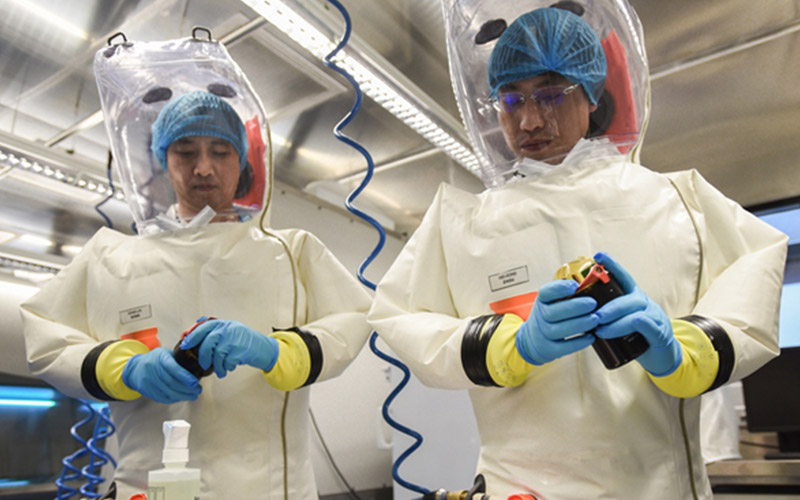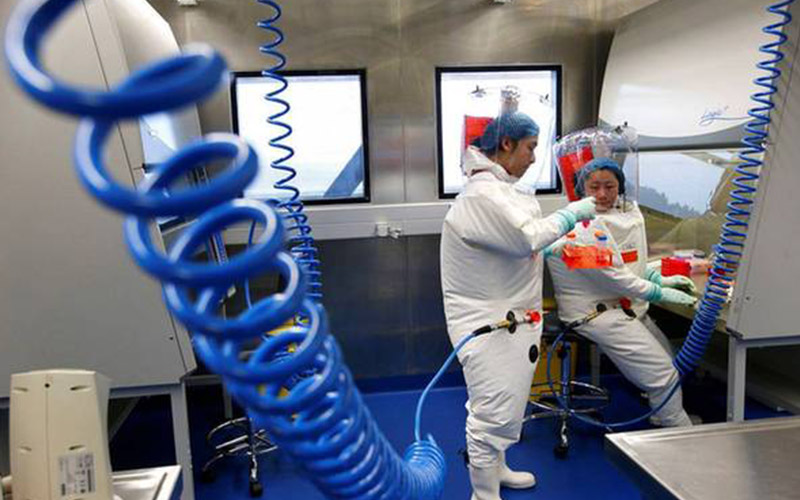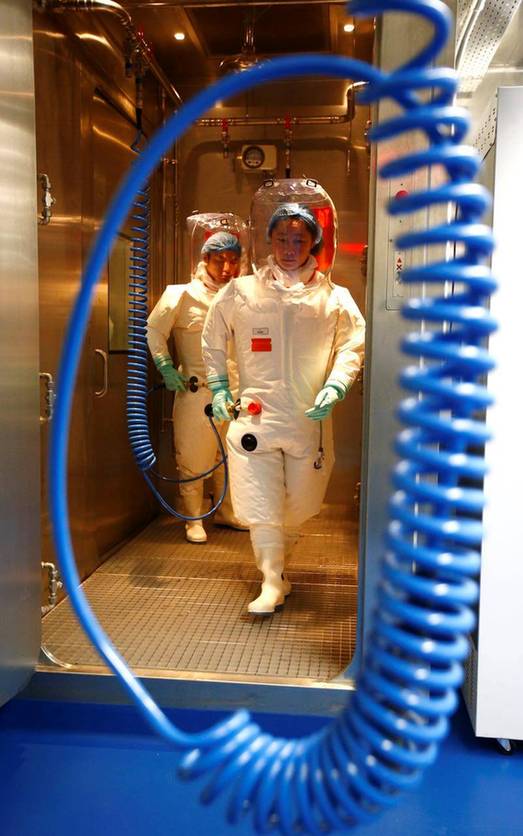We have a passion for unconventional solutions that bring your vision to life.
Wuhan Virus Institute owns the first P4 laboratory in mainland China. The mysterious "P4 laboratory" exists in almost single digits in most countries. It is considered as an "aircraft carrier" in the field of virus research. Its research object is viruses that currently have no preventive and curative methods. This has also made them known as It's the "Devil's Lab". The biochemical crisis of the earth presented in American blockbusters originates from the Biochemical Institute.
In fact, the "P4 laboratory" is not a name, but a level of a biosafety laboratory. P4 laboratory refers to a fourth-level laboratory of biosafety level.At present, the P4 laboratory is the laboratory with the highest level of biological safety owned by human beings, and it is also a large-scale device dedicated to the research of severe infectious diseases, such as Ebola virus, smallpox, and the new coronavirus outbreak. Research in a state-of-the-art laboratory.The establishment of the P4 laboratory was constructed from antibacterial cleanroom panel.

P4 not only has the highest level of safety but also has great cost and expense, which limits research and construction in many countries.In Wiskind, the concept of a modular cleanroom system was proposed to ensure stable performance while improving the recycling of clean materials, equipment and accessories, effectively reducing production and practical energy consumption, and reducing investment risks. According to incomplete statistics, the world has more than 50 P4 laboratory, in addition to China, located in France, Canada, Japan, Germany, Australia, USA, UK, Gabon (Pasteur Institute), Sweden and South Africa and other countries and area.
The Wuhan National Biosafety Laboratory of the Chinese Academy of Sciences under the Wuhan Institute of Virology is the first P4 laboratory in China, referred to as the "Wuhan P4 Laboratory"
So what is a "P4 Lab"? Why is "4" not another number?
In fact, biosafety laboratories are classified according to the degree of danger of the research object into four categories: BSL-1, BSL-2, BSL-3, BSL-4. BSL stands for Biosafety Level, which means that the higher the level, the stronger the protection level, the more infectious and harmful pathogens can be studied. Different cleanroom levels of laboratories require different levels of protection. They are divided into P1, P2, P3, and P4 according to the safety equipment and personal protection precautions of the laboratories at all levels (P stands for protection, defense, and protection in English).

Level 1 laboratory (P1 laboratory) is generally suitable for microorganisms that have no pathogenic effect on healthy adults. This level of the laboratory is suitable for relatively familiar pathogens. These pathogens do not often cause diseases in healthy adults. For laboratory personnel, And the potential dangers to the environment are minimal. This level of biological laboratory basically does not require special safety facilities, and it is generally no problem to perform tests in accordance with standard microbiological operations learned in high school.
The secondary laboratory (P2 laboratory) is applicable to microorganisms with medium and potential hazards to humans and the environment. Laboratory personnel needs to receive special training in the treatment of pathogens and be guided by qualified scientific workers.
The third-level laboratory (P3 laboratory) is suitable for pathogenic microorganisms or their toxins that cause people to infect serious or even lethal diseases mainly through the respiratory route. If the virus tested under this safety standard is inhaled due to exposure, it can cause serious and potentially fatal diseases, but humans still have a cure for this type of pathogen.
The fourth-level laboratory, the "P4 laboratory" we often hear, studies pathogenic microorganisms that are highly dangerous to the human body, are transmitted through the aerosol route or the transmission route is unknown, and no effective vaccine or treatment is currently available. Or its toxin.
The "P4 laboratory" is currently the highest biosafety laboratory in humans, and it is also a large-scale device dedicated to the research of severe infectious diseases, such as Ebola virus, smallpox, and the new coronavirus outbreak. Research in this level of laboratory. Items brought back from aliens also need to be studied in the P4 laboratory.
Therefore, "P4 Lab" is called "Aircraft Carrier" in the field of virology research. And because the infectious microorganisms studied in the "P4 laboratory" are all viruses without prevention and treatment methods, some people call the "P4 laboratory" a "devil laboratory".
The "P4 laboratory" has special requirements in terms of safety levels. The staff is in the P4 laboratory, similar to astronauts in the space capsule.
A typical "P4 laboratory" consists of a dressing area, a filtering area, a buffer zone, a disinfection area, and a core area. In addition, high-efficiency air filters are installed around the laboratory.
There are 10 laboratory cleanroom doors in the core area of the laboratory. That's right! You read that right, it's ten ways! Moreover, the inner seven cleanroom doors are interlocked. If one cleanroom door is not closed properly, the other cleanroom door cannot be opened, so as to avoid air circulation.
The dressing area is an outer dressing cleanroom, a shower cleanroom, and an inner dressing cleanroom in that order. The disinfection area is a chemical shower room. When leaving the main laboratory, the workers first disinfect the surface of the positive pressure protective clothing through the chemical shower. There is an automatic interlocking device between any adjacent doors in the core area to prevent two adjacent doors from being opened at the same time. For materials, articles, and equipment that cannot be carried in and out of the main laboratory from the dressing room, a double-door autoclave, soaking sterilization tank, fumigation room or ventilation transfer window with sterilization device should be provided on the main laboratory wall For delivery or disinfection.
In the core, area is equipped with biological safety cabinets, ultra-low temperature refrigerators, centrifuges, electrothermal cell culture cabinets, microscopes, and experimental benches, small animal laboratories, etc. There is a thick pipe with a diameter of about 0.5 meters on the top of the biological safety cabinet, which directly leads to the roof. It is also under negative pressure. Some main operations need to be performed in the biological safety cabinet.
The relevant items taken from the BSL-4 laboratory must be sterilized by an autoclave, then fully packed in a clear bag, and then transferred to the preparation room through a cleanroom pass box. When leaving BSL-4, the staff in the core area must disinfect each other's entire body from top to bottom before walking to the buffer room. Remove the outer protective clothing, masks, and outer gloves in the buffer room, and then put these into the sterilization container. Or in a sterilization bag.
After closing the laboratory cleanroom door, remove the safety glasses and place them in the cleanroom pass box for disinfection. The staff then passed another buffer cleanroom and returned to the preparation room.
Here, they can remove all protective equipment from their bodies, take a shower in the bathroom immediately, and then leave the laboratory. The P4 laboratory has strict and complicated management procedures. In order to ensure the absolute security of the BSL-4 laboratory, only those who have been approved and have a magnetic card pass can enter, and some enter through the fingerprint access control system, and all people who enter and exit Computer records.

The "P4 laboratory" must have strict security procedures, because once the pathogens in the laboratory are leaked, it will cause a wide range of infectious diseases and even be used as a biochemical weapon by terrorists, and a biochemical crisis filmed in Hollywood will be staged.
It is understood that Japan's first BSL-4 laboratory was built in 1981, but it has been operating with low-risk pathogens since its completion, and security issues were not resolved until 2015.
At present, in addition to China, the world's publicly owned "P4 laboratory" is France, Canada, Japan, Germany, Australia, the United States, the United Kingdom, Gabon (Pasteur Institute of France), Sweden and South Africa. According to incomplete statistics, there are currently more than 50 "P4 laboratories" worldwide.
There are two P4 biosafety laboratories in Mainland China: the Wuhan National Biosafety Laboratory of the Chinese Academy of Sciences and the National High-level Biosafety Laboratory for Animal Disease Control in Harbin.
In 2003 SARS after the outbreak of the Chinese Academy of Sciences decided to start the P4 laboratory construction. Wuhan P4 laboratory was approved by the National Development and Reform Commission in 2005 and has become one of the most important cooperation projects between China and France in the areas of population health, health and science, and technology.
The laboratory has introduced the technology and equipment of P4 laboratory in Lyon, France, and constructed a severe pathogen testing facility, including a cell-level biosafety laboratory, a new disease research facility, and a severe disease pathogen preservation facility (including BSL-4, BSL-3 and auxiliary facilities such as BSL-2, general laboratories, and animal breeding rooms, and related supporting facilities).

2018 11 Yue 27, Wuhan P4 laboratory construction project acceptance, has become the first P4 level biosafety laboratories. The design of the laboratory adopts a concept similar to the box-in-box of the P4 laboratory in Lyon, France. The technical staff of the engineering department responsible for the construction of the laboratory introduced to the reporter that the entire P4 laboratory is a suspended structure with 4 floors.
From bottom to top, the bottom floor is the sewage treatment and life support system; the second floor is the core laboratory; the interlayer between the second and third floors is the pipe system; the third floor is the filter system, and the uppermost floor is the air conditioning system. All air will be discharged after being treated by two-stage high-efficiency filters. Solid pollutants will be processed in an autoclave and liquid pollutants will be processed in sewage treatment equipment to ensure the complete elimination of pathogens and ensure that the pathogens in the laboratory will not be destroyed. Give way.
Inside the "Box" is the core laboratory area on the second floor of more than 300 square meters. The entire second floor is roughly divided into 3 cell laboratories, 2 animal laboratories, 1 animal dissection room, and a disinfection room. The laboratory experimental device is safe and stable in operation. It has withstood the extreme cold and hot environment of Wuhan during operation. The heating and cooling systems are all used and prepared. It can be achieved in the environment of minus 10 ℃ to the continuous high temperature of 40 ℃. Stable heating and cooling. It takes about 15 to 20 minutes for a person to enter the laboratory.
According to the official website of Wuhan National Biosafety Laboratory, the laboratory has Yuan Zhiming, Shi Zhengli, and Song Donglin; associate researchers: Zheng Dasheng and Huang Yan; senior engineers: Wu Jia and Tong Xiao; and senior experimenter Zhang Huajun.
Another, located in Harbin of national animal disease prevention and control high-level biosafety laboratory has built the world's 4 one large animal Biosafety four facilities.
The lab 2004 project, 2012 completed the construction design and construction, 2015 12 completed by May and acceptance, 2018 7 months by China National Accreditation Board for Conformity Assessment ( CNAS ) recognition. The laboratory can conduct all animal infection tests including horses, cattle, sheep, pigs, poultry, and conventional laboratory animals such as mice and monkeys.
The laboratory is supported by the Harbin Veterinary Research Institute of the Chinese Academy of Agricultural Sciences. According to media reports, the laboratory is China's first completely independent biosafety laboratory designed, constructed and managed. But the laboratory did not disclose such information.

Wiskind Cleanroom specializes in cleanroom enclosure system , ceiling system, cleanroom doors and windows and related product development, manufacturing, sales, consulting and services.